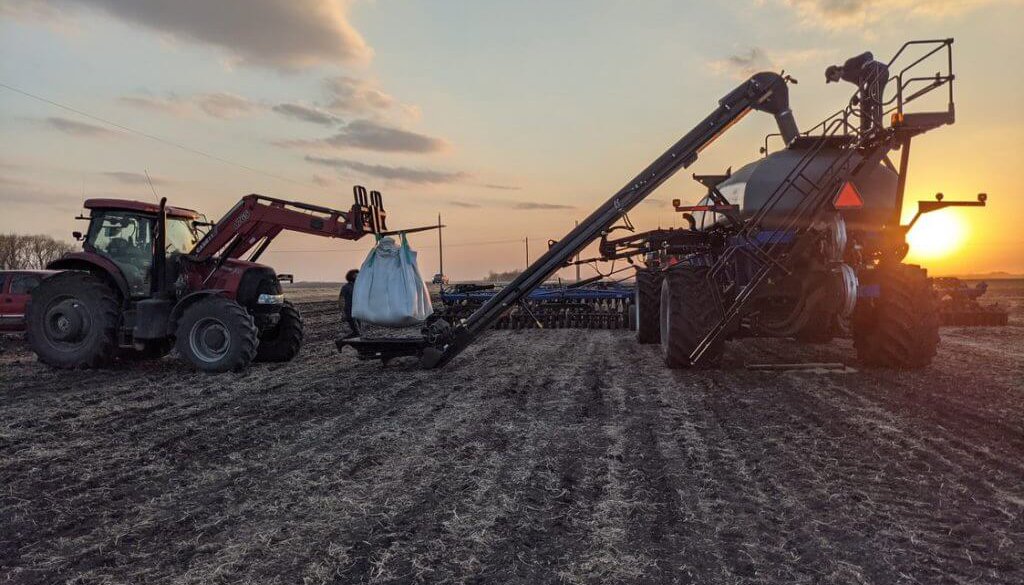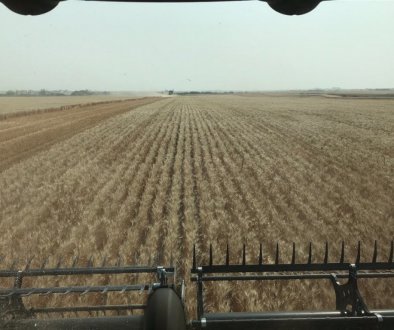2021 Canadian Barley Harvest & Quality Update
The 2021 barley harvest in western Canada was largely wrapped up by the end of September this year, with the exception of a few areas such as the Peace which were completed in October. By all accounts 2021 was one of the worst growing seasons in a generation with dismal results in terms of both the quantity and quality of this year’s barley crop in western Canada. Statistics Canada’s Model based principal field crop estimates, released September 14, forecast average barley yields in Canada at 43.6 bushels per acre, down 38% from 2020 yields of 71.1 bushels and the lowest since the 2002 figure of 41.5 bushels per acre. Provincially, the estimates show Saskatchewan was the hardest hit with average yields pegged by StatCan at 35.1 bu/acre, quite similar to the province’s estimate of 34 bushels, or 52% of the 5-year average. Alberta fared a little better with yields estimated at 49.6 bushels per acre, 69% of the 5-year average, while Manitoba at an estimated 58.8 bushels would be at 84% of the 5-year average. However, the Alberta government estimated yields at 42.5 bushels in their October 5th report, well below StatCan, and as a result the StatCan final figures for Alberta, and Canada, may come down in the final report in December.

All Canada barley production is estimated by StatCan at 7.141 million tonnes, on par with 2014 of 7.118 mln tonnes, however seeded area that year was 5.97 mln acres compared with 8.30 mln acres in 2021, almost 30% lower. With respect to harvested area, StatCan has estimated that producers harvested 90.2% of barley seeded area this year compared with 91.8% in 2020. The seems a little optimistic under the circumstances, and given the 5-year average is 89.9%. In 2002, the last time there was wide spread drought on the Prairies, harvested area was 66% of seeded area. With the potential for both yields and harvested area to drop in StatCan’s final, survey-based estimates to be released on December 3rd, the industry will not be surprised to see a “6” as the first number of total Canadian barley crop output in 2021.
Quality Implications
The result of the dry, hot growing season is a barley crop with very high protein content, reduced plump kernels and generally greater heterogeneity in the kernel size, as well as lower test weight. While the protein levels are virtually unprecedented, averaging above 14%, in the early tested barley that the industry has received, plumpness and test weights have not proven to be as bad as one might have predicted given the extraordinarily dry and hot growing conditions this past summer. This suggests that a combination of newer varieties, with apparent improved capacity to adapt and tolerate drought conditions, and modern production practices, appear to have mitigated at least some of the impact of the drought, which may have been much worse 20 years ago.
The table below shows the average results of barley quality in the samples received and evaluated from the western Canadian field trials to date. Among the 8 locations, protein content averaged 14.8% compared with an overall average from all 25 stations of 11.4% in 2020. Germination is well below last year, but close to the industry minimum standard of 95%, while water sensitivity is low. Thousand kernel weight and plumps, while below last year, are relatively good all things considered.

But this year, growers and maltsters have another issue to contend with. To add insult to injury, after two months of virtually no precipitation in much of the Prairies, suffering under a phenomenon known as a “heat dome”, rain and in some cases hail arrived in the third week of August, further reducing the potential supply of useable malting barley in western Canada as barley that was in the swath or even standing in the field, started to germinate resulting in significant pre-harvest sprout damage (PHSD). When sprouting occurs, it triggers an increase in alpha-amylase, an enzyme that breaks down starch in the barley kernel. While malting barley can still be used when there is a small amount of PHSD, if the process has gone too far the barley will be unusable by maltsters due to factors such as loss of germination, uneven water-uptake and poor growth during processing. Interestingly, the RVAs, which is an indication of PDSD, are actually quite high in the samples received at the CMBTC to date, which suggests that these locations were either harvested before the rains, or were not subject to the moisture at harvest time that other areas received.
In other years, when quality challenges arise, the malting industry would typically be able to rely in part on the carry in stocks from the previous growing season to blend and mitigate the worst impacts for at least the first portion of the marketing season. However, with record low carry out stocks of 500,000 coming into 2021 after the largest export program over 25 years, there is very little 2020 crop left to blend creating the perfect storm. The end result is that there simply isn’t enough quality malting barley to supply Canada’s malting industry in the 2021-22 marketing year. This means the industry will have to resort to pushing the limits on the quality of the barley they select and process, employ extraordinarily sophisticated and precise approaches to evaluation and processing, and look at innovative techniques in manufacturing and blending to achieve the best possible malt products under the circumstances. In spite of this, malt processors may ultimately have to reduce their production and sales program, and in some cases resort to imported malting barley.
In summary, the quality characteristics of the 2021 malting barley crop will make for an extremely challenging year for maltsters and brewers alike to process and achieve quality end products. All told, this will be one of the most difficult years Canada’s barley value chain has ever seen.


